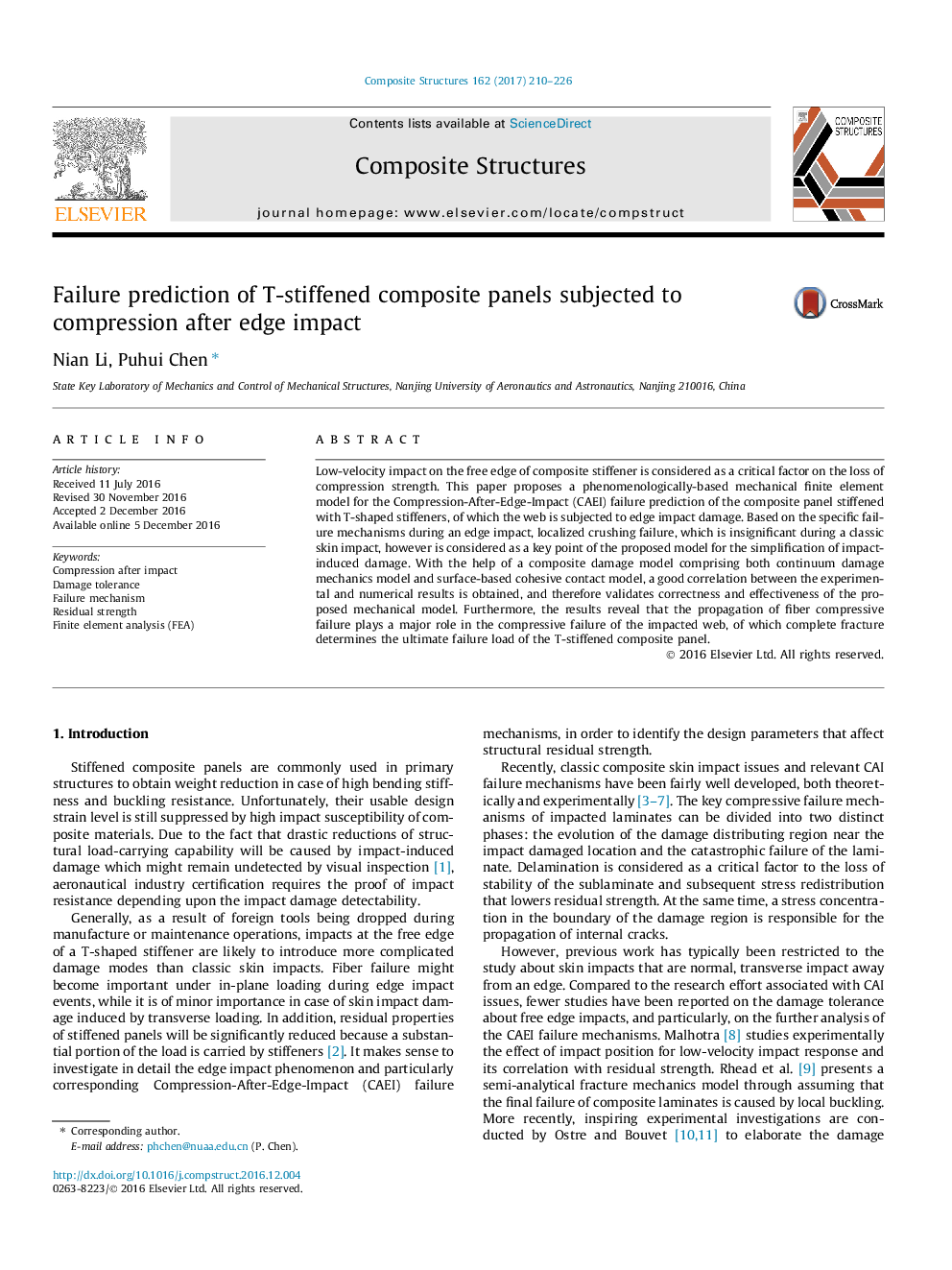| Article ID | Journal | Published Year | Pages | File Type |
|---|---|---|---|---|
| 4912262 | Composite Structures | 2017 | 17 Pages |
Abstract
Low-velocity impact on the free edge of composite stiffener is considered as a critical factor on the loss of compression strength. This paper proposes a phenomenologically-based mechanical finite element model for the Compression-After-Edge-Impact (CAEI) failure prediction of the composite panel stiffened with T-shaped stiffeners, of which the web is subjected to edge impact damage. Based on the specific failure mechanisms during an edge impact, localized crushing failure, which is insignificant during a classic skin impact, however is considered as a key point of the proposed model for the simplification of impact-induced damage. With the help of a composite damage model comprising both continuum damage mechanics model and surface-based cohesive contact model, a good correlation between the experimental and numerical results is obtained, and therefore validates correctness and effectiveness of the proposed mechanical model. Furthermore, the results reveal that the propagation of fiber compressive failure plays a major role in the compressive failure of the impacted web, of which complete fracture determines the ultimate failure load of the T-stiffened composite panel.
Keywords
Related Topics
Physical Sciences and Engineering
Engineering
Civil and Structural Engineering
Authors
Nian Li, Puhui Chen,
